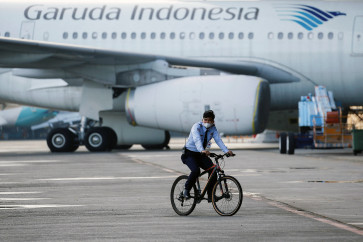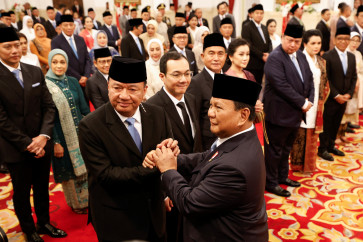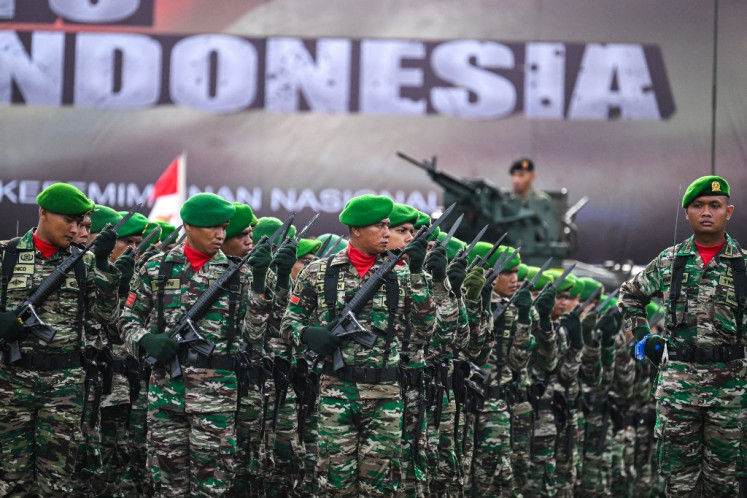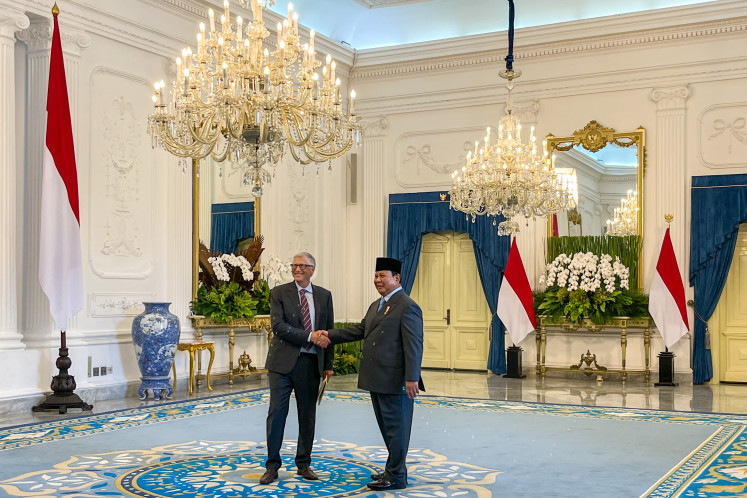First lady gives traditional batik makers 600 gas stoves
First Lady Kristiani “Ani” Herawati Yudhoyono handed over 600 gas stoves to traditional batik makers in West Java in a move to motivate the artisans to improve the creativity and quality of their products, which have received recognition as an element of world heritage
Change text size
Gift Premium Articles
to Anyone

F
irst Lady Kristiani “Ani” Herawati Yudhoyono handed over 600 gas stoves to traditional batik makers in West Java in a move to motivate the artisans to improve the creativity and quality of their products, which have received recognition as an element of world heritage.
In her speech, Ani underlined the need for regeneration among batik artisans to preserve the heritage.
She renewed her hope to make batik a national icon, especially since no other country was as rich as Indonesia in term of batik designs.
“Remember Indonesia, remember batik. Let’s keep this spirit in our hearts.”
The stoves were symbolically received by chairperson of the National Handicraft Council’s West Java chapter, Netty Ahmad Heryawan, in Cirebon, where the first lady attended a meeting on Tuesday with 250 batik makers from across the province. The event was organized by the provincial Development and Administration Coordinating Council (BKPP) and West Java Batik Foundation.
West Java BKPP head Ano Sutrisno said the stoves would be distributed by the foundation to a number of batik makers’ groups, mainly in Cirebon, Garut, Indramayu, Ciamis, Sumedang and Tasikmalaya.
The event was also attended by Vice President’s wife Herawati Boediono, Culture and Tourism Minister Jero Wacik and West Java Governor Ahmad Heryawan.
Katura of the Association of Cirebon Traditional Batik Makers raised hopes the government would help protect their products from textile products of other countries that used batik motifs, especially China.
“Unless serious protection is provided, it’s just a matter of time before the community abandons Indonesian batik,” said Katura, an eighth-generation Trusmi batik maker.
Trusmi, in Plered district, is the biggest batik production center in Cirebon, with 700 batik makers, most of whom were taught by previous generations.
Katura said traditional batiks were superior but weak marketing had made them more expensive, prompting people to turn to cheaper batiks, like those from China. “In Trusmi, batik making is not just a matter of preserving national heritage but a source of livelihood. Without protection, we will lose our income.”
Batik making in Trusmi is estimated to date back to the 14th century, following the establishment of the Kasepuhan Cirebon Sultanate.
It was initially developed only within the palace but was later expanded to the community and the coastal regions. “Trusmi batiks are famous for two main motifs: keratonan [palace style] and pesisiran [coastal style],” Katura said.









